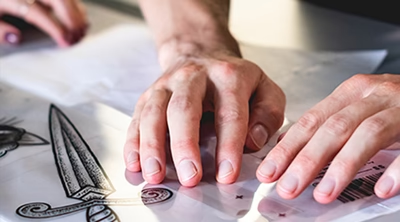Your Ultimate Guide to Plastisol Transfers
Your Ultimate Guide to Plastisol Transfers
Whether you're an aspiring apparel entrepreneur or a DIY enthusiast looking to create custom clothing, plastisol heat transfers offer an excellent solution. In this ultimate guide, we will delve into the ins and outs of plastisol transfers, their benefits, and how to use them effectively. From understanding the process to exploring the different types available, this blog will equip you with everything you need to know about plastisol transfers.
What are Plastisol Transfers?
Plastisol transfers are a popular method of printing designs onto fabrics, particularly in the garment industry. The process involves creating a design on a special type of transfer paper using plastisol ink. Once the design is ready, it is transferred onto the fabric using a heat press. The high temperature from the press causes the ink to melt and bond firmly with the fabric, resulting in a durable and vibrant print.
Advantages of Plastisol Transfers
Long-Lasting Durability: Plastisol transfers create prints that are built to last. The ink adheres strongly to the fabric, making the designs resistant to fading, cracking, or peeling, even after multiple washes.
Versatility: Whether you're printing on t-shirts, hoodies, tote bags, or caps, plastisol transfers work well on various fabric types and colors. This versatility allows you to unleash your creativity without constraints.
Cost-Effective: Plastisol transfers can be more cost-effective for small to medium-scale production compared to traditional screen printing setups. They require minimal equipment and can be produced in bulk, reducing per-unit costs.
High-Quality Output: Plastisol transfers produce precise and detailed prints, accurately capturing intricate designs and fine lines. This ensures a professional finish on your merchandise.
Types of Plastisol Transfers
Hot Peel Transfers: These transfers are peeled off immediately after the heat press, leaving a smooth and matte finish. Hot peel transfers are ideal for delicate fabrics and detailed designs.
Cold Peel Transfers: Cold peel transfers are peeled after cooling down, leaving a glossy finish. They are suitable for printing on heavy fabrics and provide a slightly raised appearance.
Hot Split Transfers: These transfers leave a textured, vintage-like print with a soft hand feel. The ink splits, leaving a portion on the transfer paper and another on the fabric, creating a unique look.
Creating Plastisol Transfers
Designing the Artwork: Start by creating your artwork using graphic design software. Remember to use vector-based graphics for the best results and ensure the artwork is mirrored before printing.
Printing the Transfer: Use screen print transfer paper specifically designed for plastisol ink. Load the transfer paper into a printer and print the mirrored design.
Drying and Curing: Allow the printed transfers to dry for a few minutes before curing them. Curing can be done using a heat press or a conveyor dryer at the recommended temperature and time settings.
Tips for Using Plastisol Transfers
Test Prints: Before printing a large batch, always perform test prints to ensure the design, colors, and curing settings are perfect.
Pre-Pressing: Pre-press the fabric to remove any moisture and wrinkles, ensuring a smooth surface for the transfer.
Storage: Store unused plastisol transfers in a cool, dry place away from direct sunlight to maintain their quality.
Bottom Line
Plastisol transfers offer a fantastic way to create stunning, long-lasting prints on various fabrics. The process is relatively simple and cost-effective, making it accessible to both seasoned professionals and enthusiastic beginners. Armed with this ultimate guide, you're now equipped to embark on your plastisol transfer journey, turning your creative visions into tangible, eye-catching designs. So, get ready to make your mark in the world of custom apparel and accessories with the magic of plastisol transfers!



.jfif)
Comments
Post a Comment